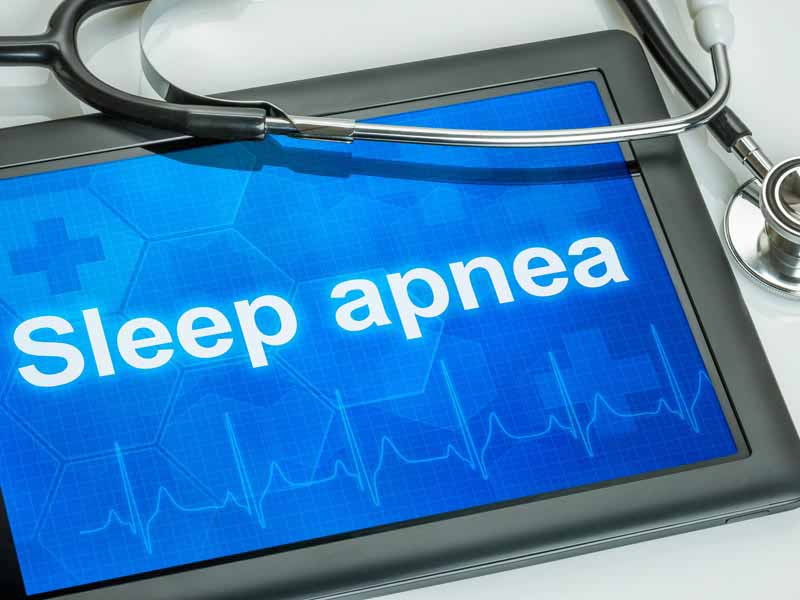USPSTF Draft Recommendation
Obstructive Sleep Apnea Screening Evidence Insufficient
April 21, 2022, 10:43 a.m. News Staff — The U.S. Preventive Services Task Force recently published a draft recommendation statement and draft evidence review on screening for obstructive sleep apnea in adults and is accepting comments through April 25.

Based on a review of the evidence, the task force concluded that current evidence is insufficient to assess the balance of benefit and harms of screening for obstructive sleep apnea in the general adult population. This is an “I” recommendation, and applies to asymptomatic individuals age 18 years or older, as well as to adults with unrecognized symptoms of obstructive sleep apnea.
The recommendation does not apply to people who present with symptoms (such as snoring, excessive daytime sleepiness, or gasping or choking while asleep) or concerns about obstructive sleep apnea, people who have been referred for evaluation or treatment of suspected obstructive sleep apnea, or people with acute conditions that could trigger the onset of obstructive sleep apnea. Care of these individuals should be managed as clinically appropriate. This recommendation also does not apply to children, adolescents or pregnant patients.
“Having sleep apnea negatively affects quality of life and is linked to health issues such as heart disease and strokes,” said task force member Gbenga Ogedegbe, M.D., M.P.H., in a USPSTF bulletin. “Unfortunately, there’s limited evidence on whether screening people who do not have signs or symptoms of sleep apnea leads to improved health, so we are calling for more research.”
Obstructive sleep apnea is a common sleep-related breathing disorder. Although the exact number of people with obstructive sleep apnea varies depending on the criteria used to define the condition, the estimated prevalence in North America ranges from about 15% to 30% in men and 5% to 15% in women, with rates of obstructive sleep apnea higher in Black, Native American and Latino populations compared with white people.
Story Highlights
A variety of health conditions and lifestyle habits can increase the risk of obstructive sleep apnea, including endocrine disorders, craniofacial or upper airway abnormalities such as an enlarged tongue or tonsils, heart or kidney failure, alcohol use, smoking and obesity. In addition to heart disease and stroke, research from the National Heart, Lung and Blood Institute indicates that sleep apnea may raise the risk of high blood pressure and diabetes.
Update of Existing Recommendation
When finalized, the recommendation statement will replace the task force’s 2017 recommendation on the topic. With only minor changes in language, the new draft recommendation statement is consistent with the 2017 recommendation, which found insufficient evidence to assess the balance of benefits and harms of screening for obstructive sleep apnea in asymptomatic adults.
The AAFP supported the 2017 recommendation.
To update the existing recommendation, the USPSTF commissioned a systematic review to evaluate the benefits and harms of screening for obstructive sleep apnea in adults, as well as the benefits and harms of treatment on intermediate outcomes and health outcomes.
The review consisted of studies published in PubMed/Medline, the Cochrane Library, Embase and trial registries through Aug. 23, 2021, as well as reference lists of retrieved articles and suggested studies from outside experts and reviewers, with additional surveillance of the literature conducted through Nov. 19, 2021. A total of 86 studies were included, including 26 studies and two companion articles that were not part of the task force’s previous review.
Findings
The task force found no studies that directly evaluated the effects of obstructive sleep apnea screening on health outcomes. While no studies directly evaluated the harms associated with screening, the task force noted a number of potential harms that could result from screening, including overdiagnosis and overtreatment, and costs associated with referrals and additional testing.
With regard to treatment, the two most common methods reviewed were positive airway pressure devices and mandibular advancement devices. The review found that treatment with either PAP or MADs improved intermediate outcomes such as apnea-hypopnea index scores and blood pressure levels, but that the magnitudes of effects were generally less with MADs than with PAP.
PAP also was found to improve some health outcomes. A meta-analysis of 48 trials found that PAP reduced mean Epworth Sleepiness Scale scores more than controls, a difference that was considered as minimally clinically important. Two other analyses found that PAP was associated with small (but not clinically meaningful) improvements in both general health-related quality of life and sleep-related quality of life.
MADs also were found, in a meta-analysis of 10 trials, to improve Epworth Sleepiness Scale scores compared with controls; however, the improvements failed to meet the criteria for being considered minimally clinically important. Overall, the task force reported that findings from trials that assessed the effects of MADs on health outcomes were inconsistent or imprecise, which made it difficult to draw conclusions on the quality-of-life benefits related to these treatments.
Research Needs
Given questions about the overall prevalence of obstructive sleep apnea and the potential effectiveness of screening, the task force called for additional research on the topic, including
- randomized, controlled trials of asymptomatic people with obstructive sleep apnea that would directly compare screening with no screening and assess health outcomes;
- additional studies to determine the accuracy of screening questionnaires and clinical prediction tools in the general adult primary population;
- the development of accurate risk-assessment tools that can identify patient populations most likely to benefit from screening; and
- more studies on the natural history of obstructive sleep apnea, with an emphasis on progression rates, length of duration before progression, and the magnitude of benefit if the condition is identified and treated earlier.
Up Next
The task force is accepting comments on the draft recommendation statement and draft evidence review until 11:59 p.m. ET on April 25.
All comments will be considered as the USPSTF prepares its final recommendation. Once the final recommendation is published, the AAFP will review and determine its stance.